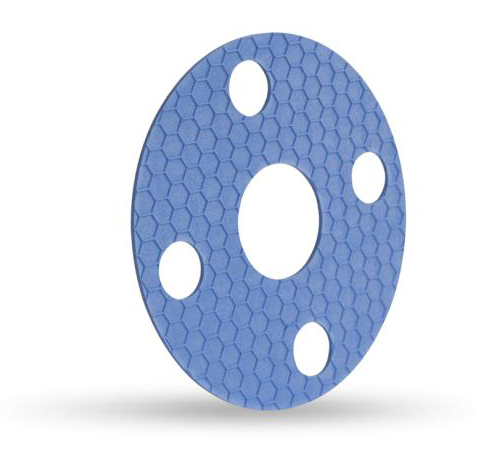Rare and Ultra-Pure Resources Present Unique Challenge to Finding Appropriate Low Temp Gasket
Modern technology often requires rare or ultra-pure materials that can only be handled or obtained within extreme environmental conditions. These same conditions present unique and hazardous difficulties when transporting or utilizing these resources. Resources such as liquid oxygen, nitrogen, or argon; all of which are classified as “industrial gases” are handled well below the normal temperature ranges that every-day liquids exist; ranging as low as -195.8°C (-320.4°F). This often makes it a challenging task to find a low temp gasket to fit the specifications for the application.
As an example, let’s look at argon; an important gas used in Welding, Neon Lights, 3D Printing, and Metal Production, just to name a few. It is far more economical to house and transport argon in its liquid state. However, it must be held at an astonishingly low -185.9°C. Fitting the pipes together and maintaining a seal in a cryogenically engineered system that the liquid argon is housed presents unique difficulties. Argon gas is colorless, odorless, tasteless, and can irritate the skin and the eyes on contact. In its liquid form it can cause frostbite.
There are important considerations that should be taken into account when installing gaskets for dangerous extreme low temp materials.
Proper Gasket Installation
Many gasket materials can become brittle, crack, shrink, and blow out when exposed to extreme cold – not something you want to happen at any time, let alone with a liquid that can freeze you into a meatsickle. So, proper installation is also key. During installation, it is important that all parts are dry, the installation is done at ambient temperature, and then re-adjusted with changes in temperature.
Cryogenics
Any mechanical seal that is sealing a product with a temperature below 0 degrees Celsius is given the name “Cryogenic”. Liquefied gases (LNG), such as liquid nitrogen and liquid helium, are used in many cryogenic applications, as well as hydrocarbons with low freezing points, refrigerants and coolants.
When selecting a low temp gasket or sealing material to be used in cryogenic service, it is important that the material can withstand cryogenic temperatures.
Low temperature applications are found across many industries, these include:
- Chemical
- Food
- Pharmaceutical
- Refrigeration
- Petroleum
- Automotive
Garlock GYLON® and KLINGER SLS/HL

Good gasketing materials that can withstand the frigid cold and are pliable in the requirement to maintain the seal would be the Garlock GYLON family of gaskets (PTFE, capable of -450°F (-268°C)) or the Klinger SLS/HL, which is made of flexible graphite and can withstand -400°F (-240°C)
Conclusion
As with all gasket applications, environmental conditions should be considered in conjunction with the functional requirements of the device. Though there are limited options to solve extreme low temp gasketing challenges, Gylon and Klinger can be a good fit for your application.
Portions of the original article were written by Michael Pawlowski and Sylvia Flegg of Triangle Fluid Controls Ltd. The article can be found on Empowering Pumps website here.
For more information about low temperature gaskets and which might be a fit for your application, contact Gallagher Seals engineering department.

